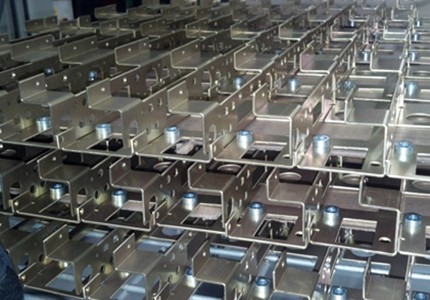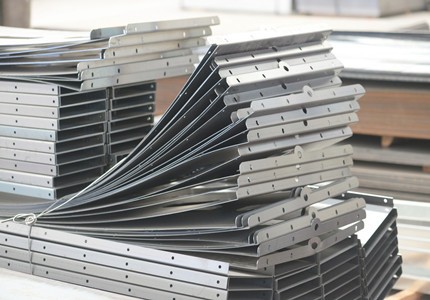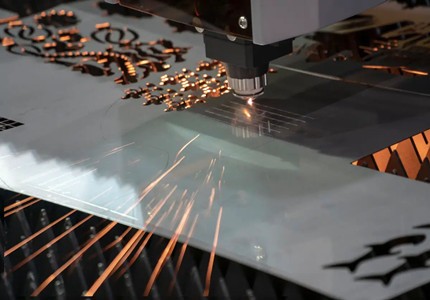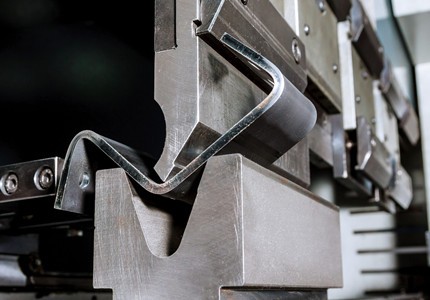Custom and precision sheet metal prototypes and low-volume parts in 5-7 days
Papler Industry is your one-stop machining shop for making custom precision parts from an array of sheet metal materials. Our sheet metal fabrication solutions are geared for making a non-exhaustive list of parts with simple or complex geometries, excellent finish, and improved functionality.
Our sheet metal fabrication services in China are ideal for rapid prototyping and on-demand, low-volume production. By integrating laser cutting and precision machining, Papler Industry delivers a high level of precision and tight tolerances to ensure that your parts match specifications and work as intended. We also offer a range of in-house finishing techniques and treatments to improve your parts post-fabrication.
OUR SERVICES
What is Sheet Metal Fabrication?
Sheet metal fabrication is the umbrella term for many processing methods used to transform flat and thin sheets of metals into high-quality end-use parts. Sheet metals refer to thin sheets of metal stocks that are no more than 0.25 inches thick.
The process begins with a CAD file – a digital copy of the final design intended for the part. Depending on the fabrication process, the sheet metals may be cut with a laser cutting machine that uses pre-programmed instructions to direct the cutting tool paths. Alternatively, the parts are fabricated through one or a combination of laser cutting, milling, forming, bending, punching, cutting, or stamping processes. Sheet metal parts can have simple or complex geometries. The affordability, scalability, and range of material selection make sheet metal fabrication popular across several industries. It is popularly used in making part enclosures, brackets, and chassis.
At Papler Industry, our sheet metal fabrication can be used for quick prototyping, low-volume production, and mass production.


Our Sheet Metal Fabrication Processes
There are several forming processes for making sheet metal parts. The fabrication method usually depends on the size of the part, the complexity of the design, and the finish type. At Papler Industry, we offer the most popular metal fabrication operations covering cutting, forming, and joining processes. Some of our techniques include:
• Metal deformation
• Material removal
o Laser cutting
Laser-focused light beam for precision cuts into sheet metals.
o Punching
A hole-forming process achieved using a punch and a die to force a hole into a metal sheet sandwiched between. The size and shape of the hole depending on the die.
o Machining
Use of CNC machines, tool paths, and cutting tools to make highly accurate and precise cuts until the sheet metal is formed into the desired path. CNC milling and spinning are popular for sheet metal applications.
o Plasma
High-speed, heat-compressed plasma directed at sheet metal for cutting operations.
o Waterjet
High-velocity concentrated water streams for cutting sheet metals.


Advantages of Sheet Metal
1. Strength/Weight Ratio
Sheet metal parts made from steel, aluminum, and copper have excellent strength-to-weight ratios. This makes them ideal for applications where both high strength and lightweight are vital.
2. Scalability

Sheet metal fabrication can make high-quality parts independent of volume. With sheet metal fabrication, you can expect the same quality on ten parts to be consistent with one thousand pieces. This is excellent for rapid prototyping and low-volume manufacturing.
 Sheet metal parts can make large volumes of end-parts at a lower cost-per-unit. It is a more effective solution for producing quality end parts.
Sheet metal parts can make large volumes of end-parts at a lower cost-per-unit. It is a more effective solution for producing quality end parts.
 Sheet metal produces highly durable metal parts and is well-suited for both functional prototypes and end-use production.
Sheet metal produces highly durable metal parts and is well-suited for both functional prototypes and end-use production.
 Sheet metal parts are durable for direct application components and as part of other parts. Most sheet metal parts can be used directly to the end-use product after painting or plating.
Sheet metal parts are durable for direct application components and as part of other parts. Most sheet metal parts can be used directly to the end-use product after painting or plating.
 Sheet metal parts can be painted, anodized, plated, and finished in several ways to beautify and improve your parts' functionality.
Sheet metal parts can be painted, anodized, plated, and finished in several ways to beautify and improve your parts' functionality.
Applications of Sheet Metal Fabrications
Sheet metals can be typically used to make the following parts and components:
• Chassis
• Surgical implants
• Chipsets and boards
• Office equipment
• Brackets
• Chassis
• Enclosures
• Culinary, Cutlery, and Kitchenware
• Body panels
• On-demand production
Sheet metal parts are suitable for on-demand production and mass manufacturing as needed. This is because sheet metals can be easily fabricated into desired angles, forms, and shapes.
• Rapid prototyping
Sheet metals can make high-fidelity prototypes in various production-grade materials starting from one unit.
• Low-volume manufacturing
Sheet metal fabrication can make low-volume units of your parts without compromising quality and durability. At Papler Industry, you can receive low-volume units of your parts in as fast as seven days or lesser.


Industries
Sheet metal parts are widely coveted across industries for their affordability, diversity, and precision. Sheet metal can be typically used in the following industries:
Material options
Sheet metal fabrication is possible with virtually any type of metal alloy. However, certain metals have more widespread uses than others across industries. The most popular material options for sheet metals are:
After our sheet metal parts have been fabricated, Papler Industry proceeds with post-processing and finishing services to improve functionality and offer protection or beautify your parts. Some of our finishing options are summarized below:
Sheet Metal FAQ
1. What is the thinnest sheet plate can you use for sheet metal manufacturing?
The thinnest sheet plate we can use for manufacturing is 0.05mm.
2. What’s the thickest sheet plate can you bend?
The thickest sheet plate we can bend is 8mm.
3. Can you rivet the parts for us?
Yes, we can rivet the parts for our clients.
4. Can you bend the aluminum 6061?
Generally, we can bend the aluminum 6061 at no more than a 90-degree angle. Otherwise, the parts would be cracked.
5. Can you source the PEM nuts and install them for us?
PEM nuts would need a MOQ to be sourced here and we would use the equivalent inserts to install if that can be accepted.